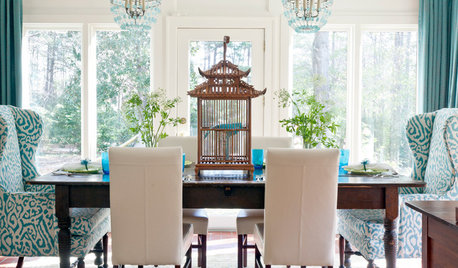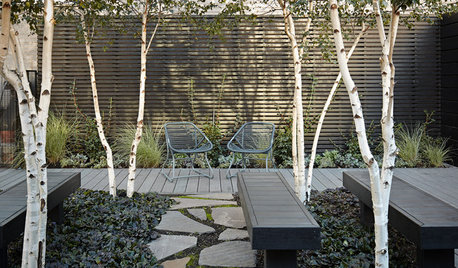Fruit tree spacing?
Raw_Nature
11 years ago
Related Stories

GARDENING AND LANDSCAPINGCrazy for Fruit Trees
Whether a single citrus or a mini apple orchard, even the smallest landscape space can bear deliriously delicious fruit
Full Story
FARM YOUR YARDIf You Have Room for Only One Fruit Tree ...
Juice up a small garden with one of these easier-care or worth-the-effort fruit trees for a mild climate
Full Story
EDIBLE GARDENSHow to Grow 10 Favorite Fruit Trees at Home
Plant a mini orchard in fall, winter or early spring to enjoy fresh-off-the-tree fruit the following year
Full Story
ENTERTAININGEye-Catching Centerpieces Beyond Flowers and Fruit
Use your imagination to create a tableau that reflects your surroundings, creates dramatic tension or elicits surprise
Full Story
GARDENING GUIDESGreat Design Plant: Grow Blueberries for Their Fruit and More
Eastern gardeners should consider growing blueberry plants for their delicious fruits, bee-friendly spring blooms and brilliant fall foliage
Full Story
EDIBLE GARDENSGrow Plum Hybrids for Your Favorite Fruit Flavors
Plums are cozying up with apricots, peaches and even cherries — here’s how to grow these hybrids for the best aspects of each
Full Story
EDIBLE GARDENSHow to Add an Apple Tree to Your Edible Garden
Readily available, beautiful and fragrant, apple trees offer four-season interest along with crisp, juicy fruit
Full Story
SIDE YARD IDEASNarrow Trees for Tight Garden Spaces
Boost interest in a side yard or another space-challenged area with the fragrance and color of these columnar trees
Full Story
LANDSCAPE DESIGN5 Ways to Use Trees to Create a Sensational Garden Space
Trees define spaces in multiple ways and bring a layer of shade and intrigue to the landscape
Full Story
LANDSCAPE DESIGNPretty Trees for Patios, Paths and Other Tight Spots
Choose trees for their size, shape and rate of growth — or shape them to fit your space. Here's how to get started
Full StoryMore Discussions








dmtaylor
Raw_NatureOriginal Author
Related Professionals
Brentwood Landscape Architects & Landscape Designers · Eden Prairie Landscape Architects & Landscape Designers · Marina Landscape Architects & Landscape Designers · Rancho Cordova Landscape Architects & Landscape Designers · Saint Matthews Landscape Architects & Landscape Designers · Severn Landscape Architects & Landscape Designers · Brooklyn Center Landscape Architects & Landscape Designers · Azalea Park Landscape Contractors · Berkley Landscape Contractors · Commack Landscape Contractors · Dallas Landscape Contractors · Hurricane Landscape Contractors · Norwalk Landscape Contractors · Seven Hills Landscape Contractors · South Farmingdale Landscape ContractorsRaw_NatureOriginal Author
fruitnut Z7 4500ft SW TX
Raw_NatureOriginal Author
fruitnut Z7 4500ft SW TX
Raw_NatureOriginal Author
ahajmano
Raw_NatureOriginal Author
fruitnut Z7 4500ft SW TX
Suzi AKA DesertDance So CA Zone 9b
Raw_NatureOriginal Author
Raw_NatureOriginal Author
bob_z6
Raw_NatureOriginal Author
bob_z6
ahajmano
Raw_NatureOriginal Author
alan haigh
Chris-7b-GA
Noogy
alan haigh
Noogy
alan haigh
mrcaballus
Raw_NatureOriginal Author
alan haigh
Raw_NatureOriginal Author
MrClint
Raw_NatureOriginal Author
alan haigh
Raw_NatureOriginal Author
MrClint
Raw_NatureOriginal Author
alan haigh
Raw_NatureOriginal Author
bob_z6
Raw_NatureOriginal Author
garedneck
Raw_NatureOriginal Author
bob_z6
Raw_NatureOriginal Author
bob_z6
Raw_NatureOriginal Author
garedneck
Raw_NatureOriginal Author
garedneck
Raw_NatureOriginal Author
Brad Edwards
alan haigh